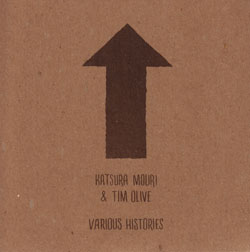
Luigi Russolo, painter and author — and non-musician — of the 1913 Futurist text The Art of Noises, believed that instruments had grown pedantic and stale as far as what they were intended to produce: an evolving variety of sound; the future of exciting, liberating "music" would run in tandem with the advent and "multiplication of machines". He advised that the world stop ignoring the new symphony built from the urban sonic landscape, as "In this way the motors and machines of our industrial cities will one day be consciously attuned, so that every factory will be transformed into an intoxicating orchestra of noises."
That was 100 years ago, and so-called noise musicians abound — and, though we have an abyss of devices from which to manipulate and mangle, many still aren't listening to the gears, circuits and hum that surrounds them, instead interpreting change and non-idiosyncrasy as grounds for hostile, aggressive, forced revolution. However, there are some who, as Russolo writes, "enlarge and enrich the field of sound", particularly Katsura Mouri and Tim Olive who can take broken-down turntables, pickups, "metals", bits and bobs and engage you toward a quizzical torpor.
Whereas Olive's solo explorations inhabit a gentler, subtler universe of objects in drive-by of his "guitar" (a piece of wood with a couple of strings nailed to it) pickups, each piquing the magnets to clang and reverberate, Mouri's input adds a more directional progression, though one in a jagged, circular stasis like plastic record player and abused records she appears with live would suggest. The first of five untitled tracks begins in a tense rumble underneath occasional pings and pops, the former soon giving way to short bursts of contorted information (you can almost make out a distressed voice at one point) and a slowly pulsing hum. Track Two follows suit, only with a heightened excitement via an expanded sonic palette and platter speed across even dustier surfaces. By Track Four, the duo has established the arch of the record as loud and soft, both members now working with more interdependence to build a texture resembling a controlled, distant windstorm just-rattling your patio furniture. For the fifteen-minute-plus finale, we have a marriage of perfect fifth in La Monte Young's Composition 1960 #7 or Éliane Radigue's Milarepa odes with the next musical steps: movement within the drone. All is tranquil with Olive and Mouri exhibiting a rocking (as in "chair") motion of roomy, congruous ostinatos that comfortably ease into a controlled feedback loop that endures, sheds and eventually (eleven minutes later) reveals itself as a sine wave; meanwhile, below the horizon the ensemble swirls with lower frequency fog to bring the work to a close — effectively replicating Kyoto's "sweltering summer day in 2010, in non-air-conditioned discomfort" when / where the works were captured.
To further lean on Russolo's words, "The new orchestra will not evoke new and novel emotions by imitating the noises of life, but by finding new and unique combinations of timbres and rhythms in noise..." Through sensitive attention to possibility, Olive and Mouri have truly found a "way to fully express the rhythm and sound that stretches beyond normal un-inebriated comprehension."
Comments and Feedback:
|



